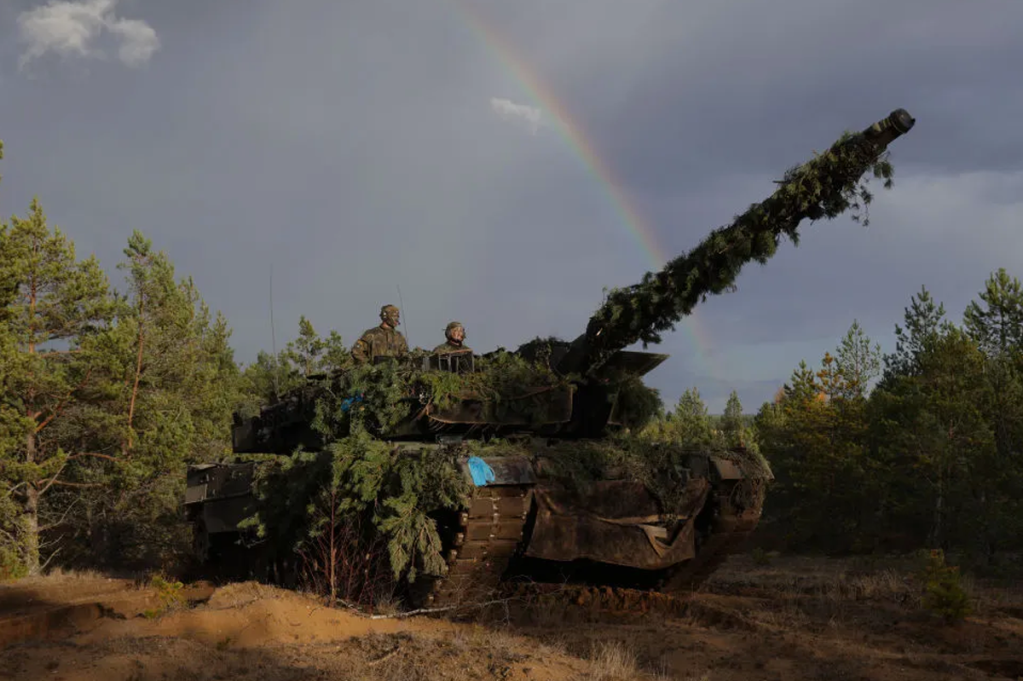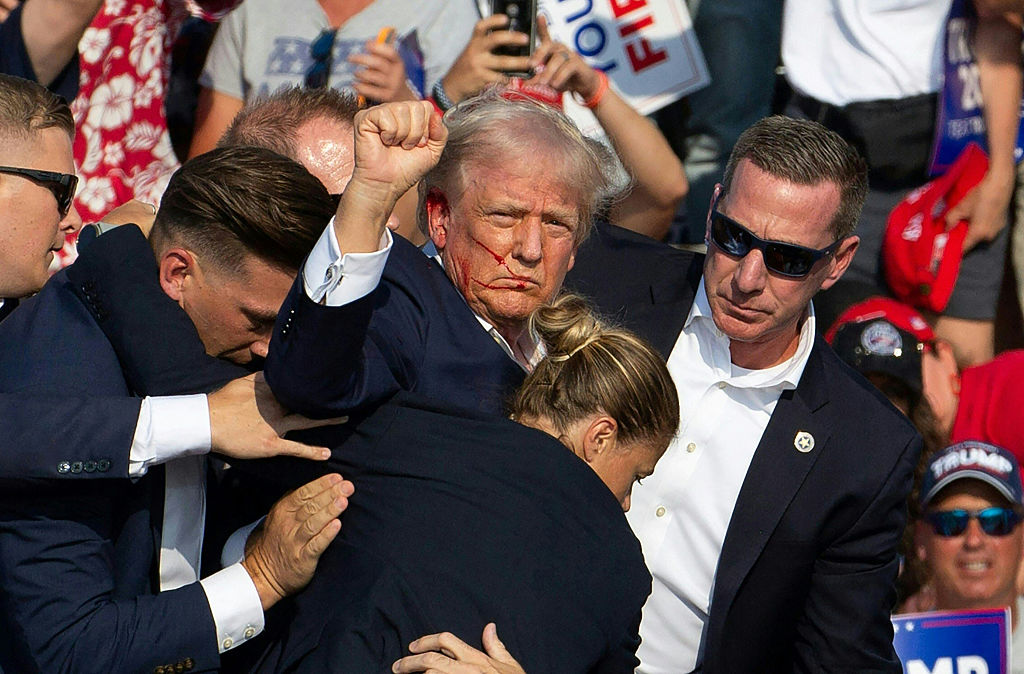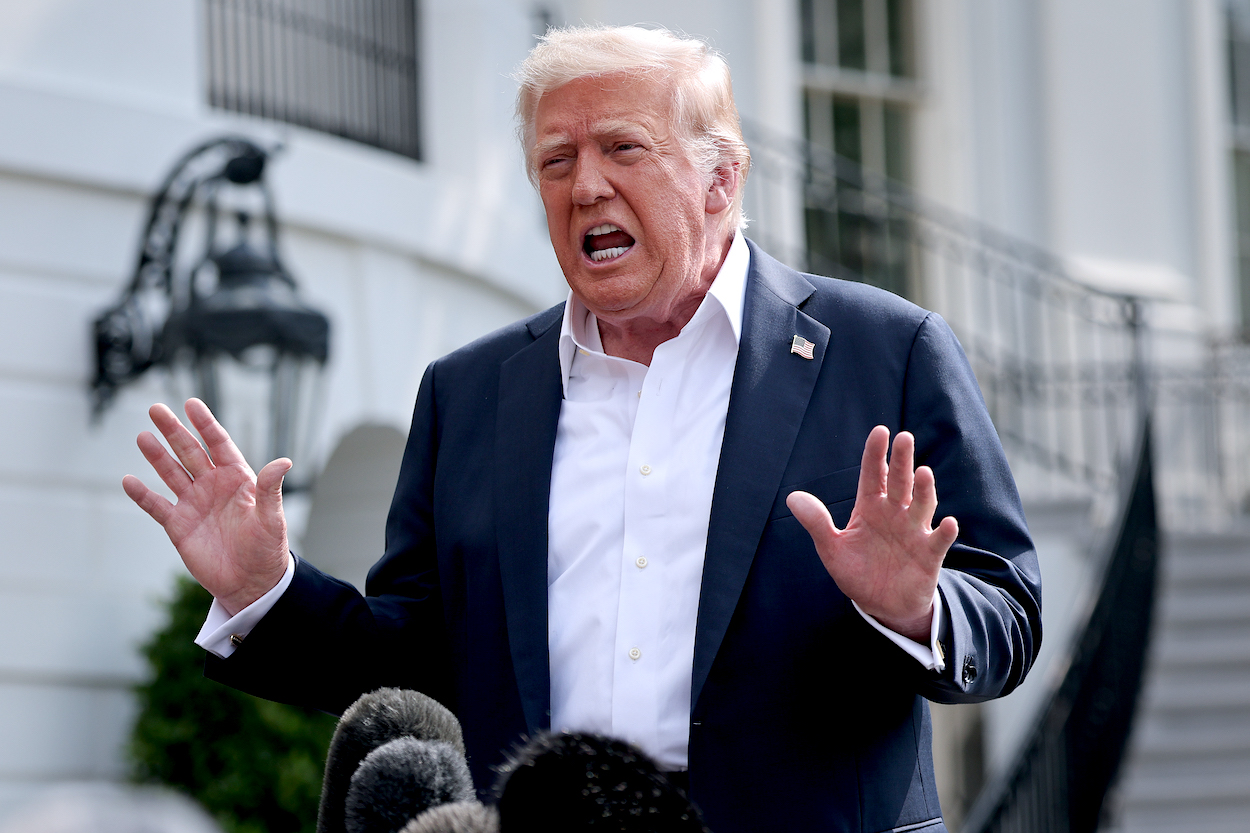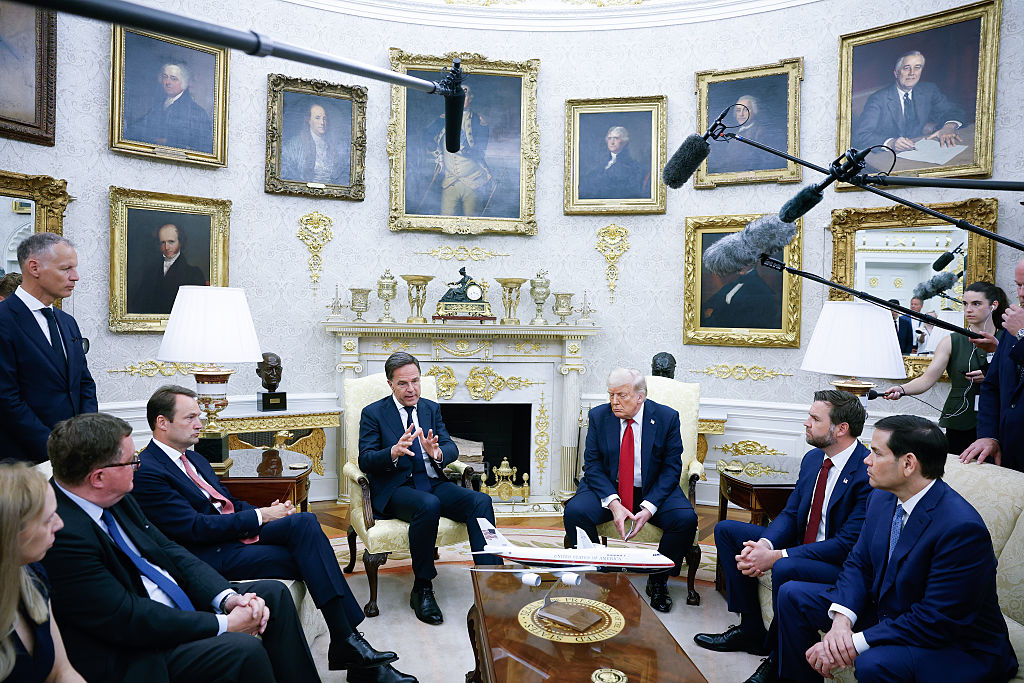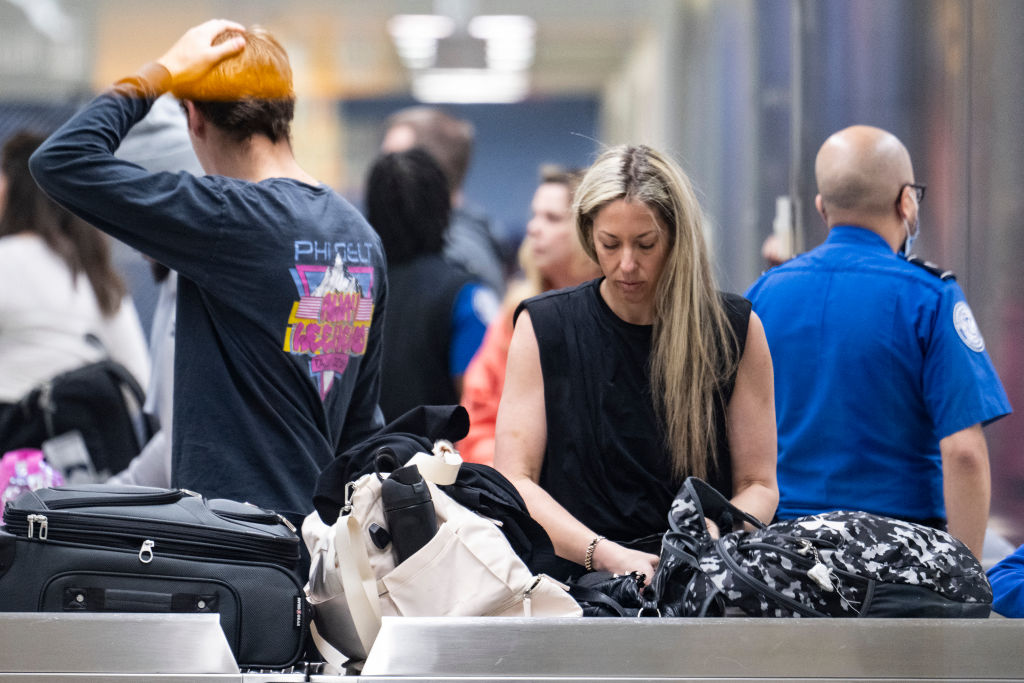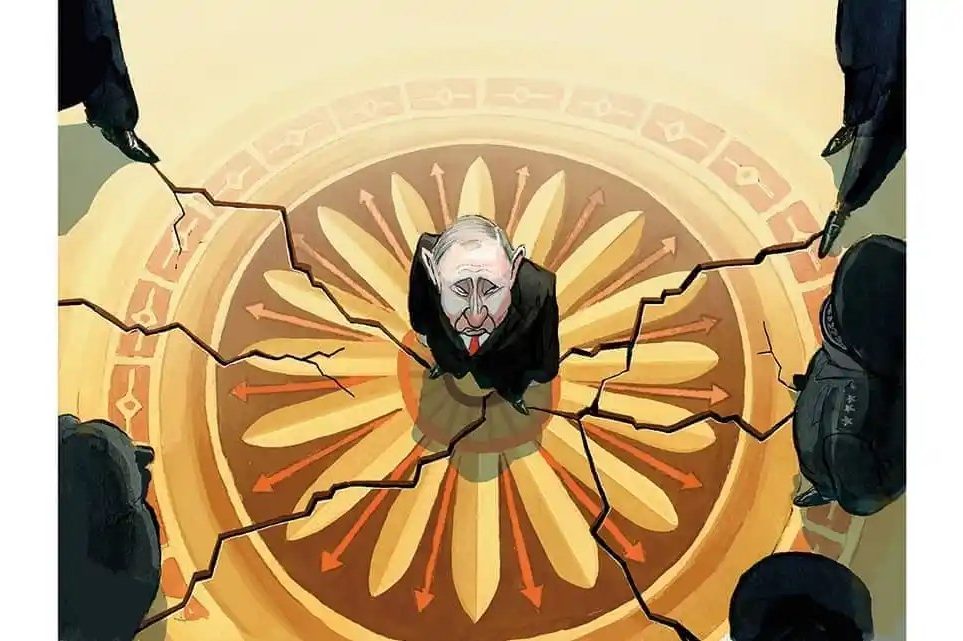Ukraine’s top soldier, General Valery Zaluzhny, has said that if he is to launch a successful counter-offensive, the West will have to provide him with another 300 tanks. This is, of course, a negotiating position. President Volodymyr Zelensky’s government has been very effective in managing western allies: cajoling, demanding and guilting them into providing more than they intended. He’s actually going to be getting more tanks, if not 300, now that Berlin has been browbeaten into lifting its objections. Might Germany’s initial reluctance suggest a changing perception of the war? It has certainly revealed the limited nature of the European powers’ arsenals.
NATO countries have already been supplying tanks. In April last year, the Czechs led the way by sending modernized Soviet-era T-72s, followed by most of the other former Warsaw Pact nations. This made sense, as Ukrainian tank and maintenance crews were already familiar with these models. More are heading towards the battlefield, but the controversy now is over supplies of more advanced western-built vehicles. Britain’s decision to send fourteen Challenger 2 tanks may seem a drop in the bucket, intended to help push a reluctant Berlin into, if not sending some of its own Leopard 2s, at least lifting its objections to others such as Poland, Finland, Spain, Denmark and the Netherlands doing so. (As the tanks’ manufacturing country, Germany has a veto on their export.)
The Leopard is a very capable design and the most widely used tank in Europe. Armed with a 120mm main gun, it can move at more than forty miles per hour despite having good armor. Even though it entered service in 1979, a regular program of upgrades means it is still a serious frontline system, able to hold its own with all but its most modern Russian counterparts. In any case, Moscow has so far been unwilling to risk its latest tank, the T-14 Armata. Britain’s Ministry of Defense suggested that this was because “commanders are unlikely to trust the vehicle in combat.” The Armata is still prone to malfunction: one broke down the first time it featured in a Red Square parade.
Instead, Russia’s army is forced to raid its stockpiles and furnish its mobilized reservists with half-rusted and hand-me-down Soviet kit. Meanwhile, Ukraine is increasingly fielding twenty-first-century equipment, albeit of such varied and semi-random composition as to make a logistician weep. For example, while the Challenger also has 120mm guns, the Soviet-era tanks Ukraine is using have 125mm guns. The importance of the Leopards is that they could provide the kind of protected and rapid offensive capability that might allow Ukraine to make advances even against tough Russian opposition.
During their spectacular breakthrough in September, when forces along the Kharkiv front took back 4,600 square miles in less than a month, the Ukrainians were often racing forward in lightly armored personnel carriers and even civilian trucks. This was possible because the Russians were thinly spread and often unsupported. A British military observer praised the Ukrainians’ “fighting spirit” but also observed that “if the Russians had been more numerous, more prepared, more willing to stand and fight, the Ukrainian losses could have been terrible” — because they lacked adequate armor.
The recently demoted Russian field commander General Sergei Surovikin was determined to ensure there would be no more easy Ukrainian victories. He sent more troops to the front line, abandoned indefensible objectives, including the city of Kherson, and started building multiple defensive lines, especially to the south of the occupied territories. His replacement, Valery Gerasimov, is a career tank officer and also understands the importance of interlocking defense in depth. The war’s next stage is likely to be a hard-fought struggle of attrition.
Which is where the tanks come in. They are still the best weapon for breaking a line in the inevitable spring offensive. More to the point, Kyiv believes that if it can build a brigade of modern western tanks and infantry fighting vehicles, it would have a spearhead able to punch through Russian defenses and pose a serious threat to the strategic land corridor to Crimea.
Of course, there are risks. Berlin’s reticence is in part driven by a fear of what Moscow would do with the symbolism of a blitzkrieg led by German tanks. In practice, however, Vladimir Putin’s options for escalation — a new wave of mobilizations, deploying conscripts or, though unlikely, nuclear weapons — are limited and all come with serious political costs. Just as worrying is the risk of Ukrainian overreach. One Pentagon analyst fretted to me that “the Ukrainians get overconfident and feel they need to prove to us that we made a good investment.” They may end up taking serious losses, forcing them into a pause to consolidate during this summer’s all-important campaigning season. “There’s something about the tank that makes people feel invincible,” he added.
There is certainly a kind of cult of the tank — together with a perennial debate about whether it is on the verge of obsolescence. Russia lost 700 of them during its initial stab at Kyiv in February and March, especially to the American Javelin and British-supplied NLAW anti-tank missiles. To a large extent, though, this was because they were deployed without infantry support to smoke out potential ambushes, or airpower to suppress enemy artillery. On their own, tanks are surprisingly vulnerable: in Russia’s two Chechen wars, unaccompanied tanks were taken out by a combination of grenades, rifles and, of all things, spray paint. One rebel raked the vehicle with gunfire that distracted the crew’s attention; a second made a daring — sometimes suicidal — dash to spray its periscopes with paint; a third waited for the commander to open his hatch and dropped in a grenade.
Likewise, Russia’s heavy losses in Ukraine were the result of tactical blunders and a lack of adequate infantry support rather than, as some analyses suggested, signs that the age of the tank is over. Indeed, half of those lost had actually been abandoned, sometimes because of battle damage but more often simply because they broke down or ran out of fuel.
But in truth, this monarch of the battlefield is something of a prima donna. Tanks demand huge amounts of fuel — the notoriously thirsty US Abrams M1 does 0.8 miles a gallon — and extensive regular maintenance. This requires massive logistical support. Washington’s justification for originally not offering some of its stock of Abrams is, said the Pentagon spokesperson Sabrina Singh, “the high cost that it would take to maintain an Abrams — it just doesn’t make sense to provide that to the Ukrainians at this moment.”
At least the Americans have a serious tank fleet, with more than 2,500 M1 Abrams and another 3,700 in storage. One reason the Ukrainian request has proven troublesome is the degree to which European NATO states have allowed their tank fleets to decay since the end of the Cold War and the ill-conceived war on terror. Why keep these vehicles ready for action when future missions looked likely to be limited ones into distant deserts and mountains, against lightly armed insurgents?
Britain’s Challengers didn’t go to Afghanistan because (as the Soviets painfully learned in their invasion of that “grave of empires”) the terrain really doesn’t suit tanks. Likewise, France’s Leclerc tank has flown the flag in peacekeeping missions in Kosovo and Lebanon, but not featured in its numerous interventions in Africa. In 2011, the Dutch even sold off their entire tank fleet as a cost-cutting measure, only to have second thoughts in 2015 following the annexation of Crimea.
Britain has 227 operational tanks, France 222 and Germany 213. All three have further stocks in storage (152, 184 and ninety-nine, respectively), but clearing off the mothballs is no small task. According to the head of the arms manufacturer Rheinmetall, refurbished German tanks will not be ready before 2024. By contrast, Poland, before it started sending tanks to Ukraine, had almost a thousand, including 249 Leopard 2s. It can afford to be generous because it is phasing out the Leopards, instead ordering 250 Abrams and 1,000 South Korean Black Panthers. Greece, Spain and Turkey all have more Leopards than Germany, and while Italy has only 125 operational Ariete tanks, this is partly because it has opted for a large force of Centauros, lighter-wheeled military vehicles that nonetheless pack a tank-destroying main gun.
Russians will take at least a decade to reconstitute their armed forces after the mauling they are getting in Ukraine. And it’s unlikely that Putin ever seriously considered fighting directly with NATO. Even so, thanks to years of neglect, the alliance’s notional European leaders have abdicated their responsibilities. Just as Britain’s impressive new aircraft carriers lack their proper complement of aircraft, one suspects that Europe’s NATO members have been fantasizing about military might, buying enough tanks to look the part but not enough to mean it.
This article was originally published in The Spectator’s UK magazine. Subscribe to the World edition here.



